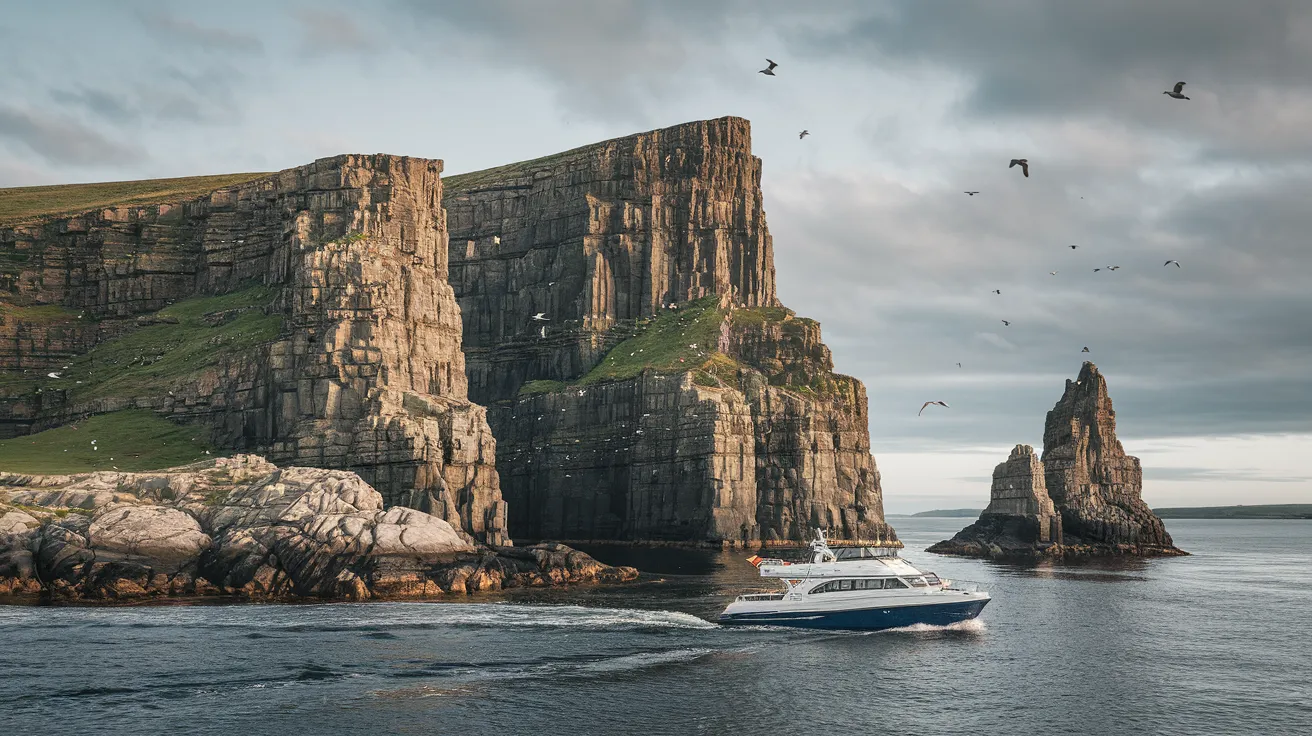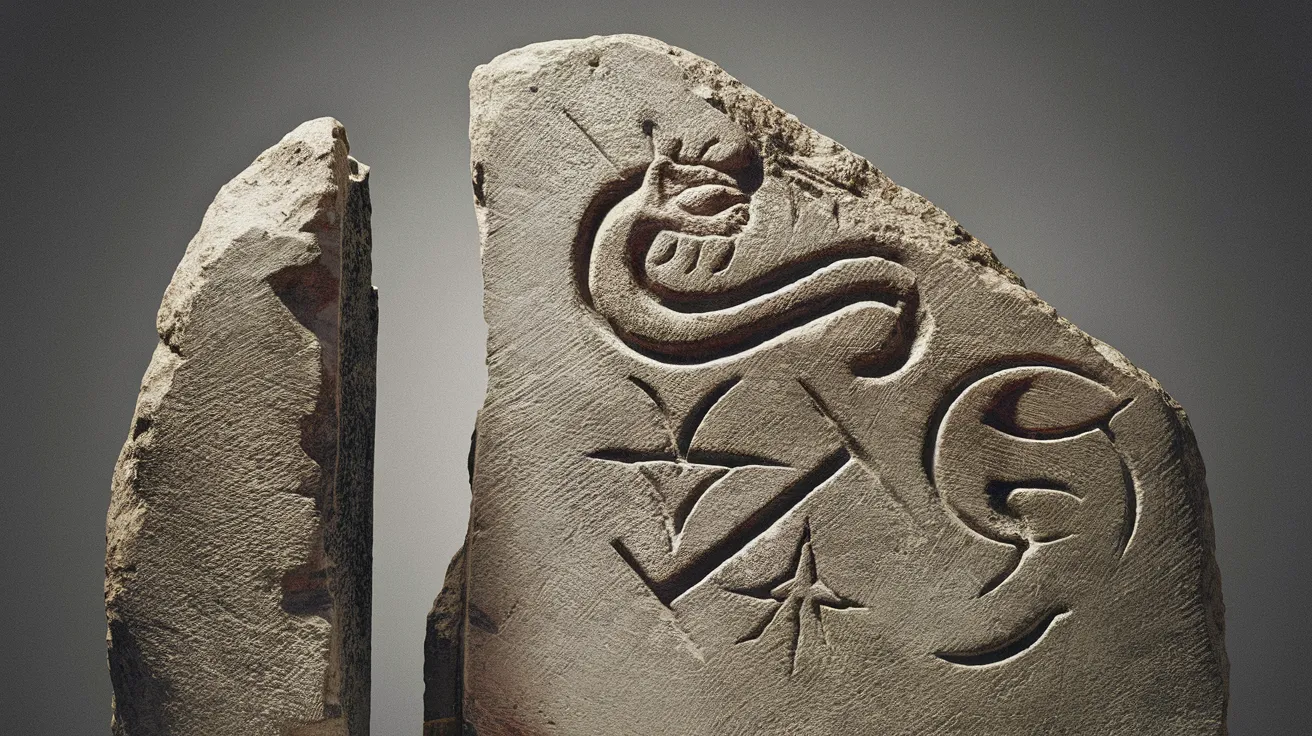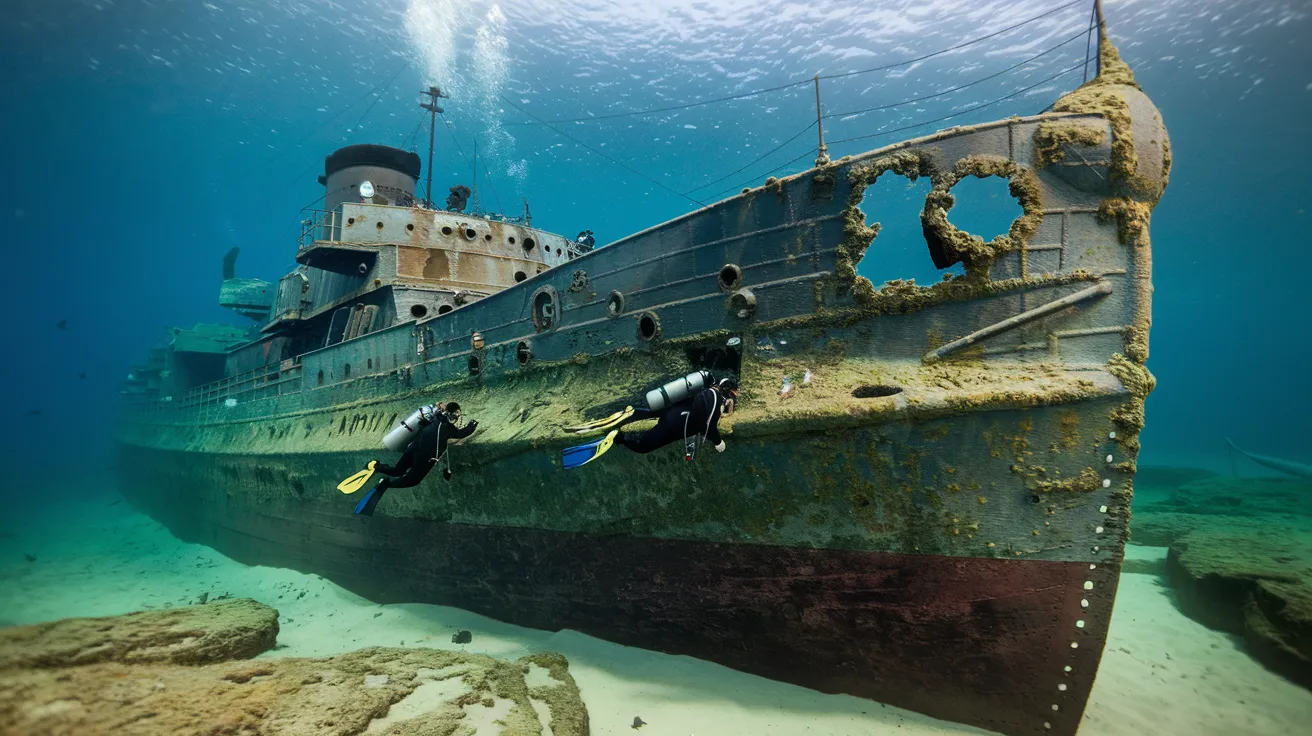Quick Navigation
- Why 'Egypt of the North'?
- Neolithic Masterpieces: Tombs of the Ancestors
- Midhowe Broch: An Iron Age Stronghold
- The Westness Walk: A Journey Through Time
- Other Island Highlights
- Planning Your Visit to Rousay
- Frequently Asked Questions
- How long do you need to visit Rousay?
- Can you walk around Rousay?
- Is Rousay part of the Heart of Neolithic Orkney World Heritage Site?
- Are the sites difficult to access?
Step onto the island of Rousay, and you step into a landscape saturated with history. Known affectionately as the 'Egypt of the North', this small, hilly island in Orkney boasts an astonishing concentration of archaeological sites – over 160 recorded monuments spanning 5,000 years of human settlement. From monumental Neolithic tombs and Iron Age brochs to Viking burial grounds, Rousay offers an unparalleled journey through time, all set against a backdrop of stunning coastal scenery and rich wildlife. Prepare to be captivated by this archaeological treasure trove.
Why 'Egypt of the North'?
The evocative nickname was coined in the 1930s by Walter Grant, the Laird of Trumland House on Rousay, who funded extensive excavations on the island. He compared the sheer density and significance of Rousay's ancient monuments, particularly along its western coastline, to the famous archaeological riches of Egypt's Valley of the Kings. With dozens of major sites packed into a relatively small area, the comparison highlights Rousay's unique status as a microcosm of Orcadian, and indeed European, prehistory and history. The island's geology, offering good building stone and fertile land near sheltered shores, likely contributed to its continuous occupation and the survival of its remarkable monuments.
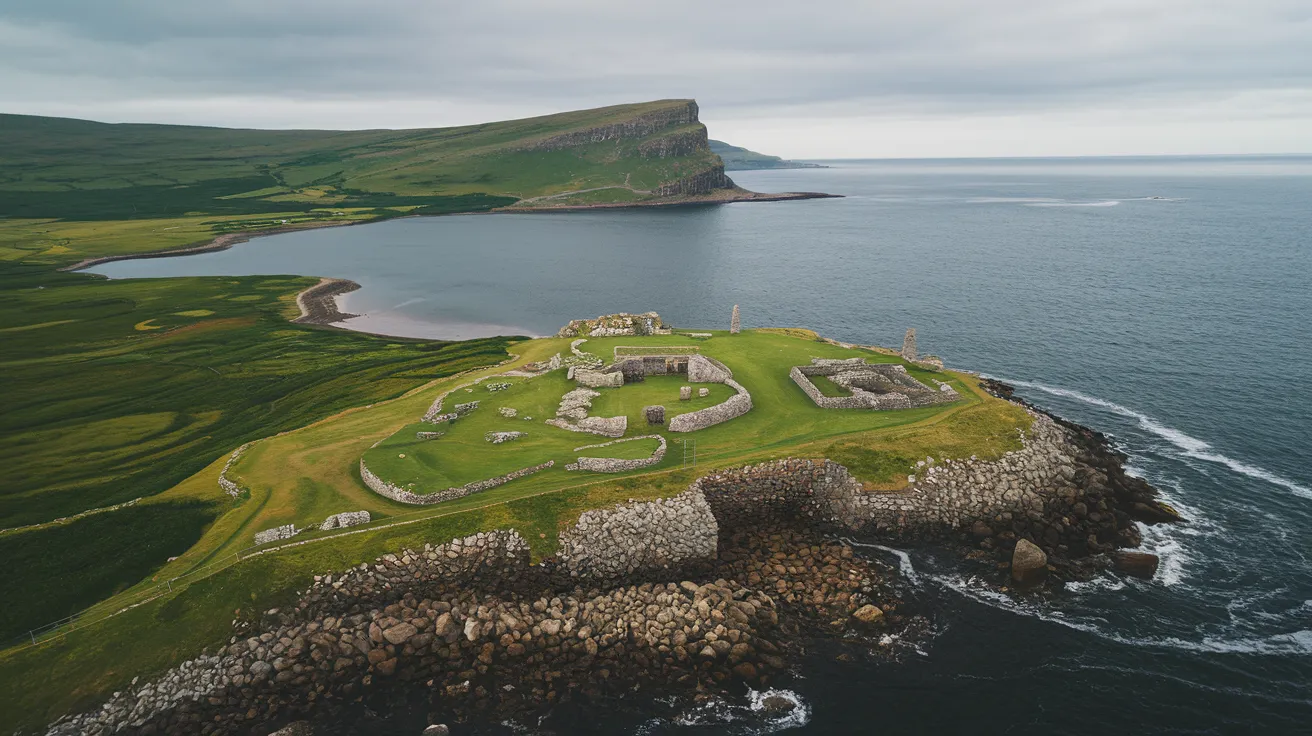
Neolithic Masterpieces: Tombs of the Ancestors
Rousay's most famous sites are its monumental Neolithic chambered cairns, communal burial places dating back over 5,000 years:
- Midhowe Chambered Cairn: Arguably the most impressive, this enormous stalled cairn, stretching over 32 metres long, is often called the 'Great Ship of Death'. Inside its protective modern hangar (built by Grant), walkways allow visitors to peer down into the 12 stalled compartments where the remains of at least 25 people, along with animal bones, were interred around 3500 BCE.
- Taversoe Tuick Cairn: Unique in Scotland, this cairn features two burial chambers, one above the other, connected by an internal ladder-like passage. This unusual two-story design hints at complex Neolithic rituals and architectural innovation.
- Blackhammer Cairn & Knowe of Yarso: These nearby stalled cairns further enrich the Neolithic landscape. Blackhammer is noted for its distinctive 'zigzag' entrance masonry, while Knowe of Yarso yielded remains of red deer (now extinct on Rousay) alongside human burials, offering insights into the Neolithic environment and diet.
These tombs represent sophisticated engineering and profound connections to ancestry and the landscape, forming a core part of the Heart of Neolithic Orkney story, even though Rousay isn't formally within the UNESCO site.
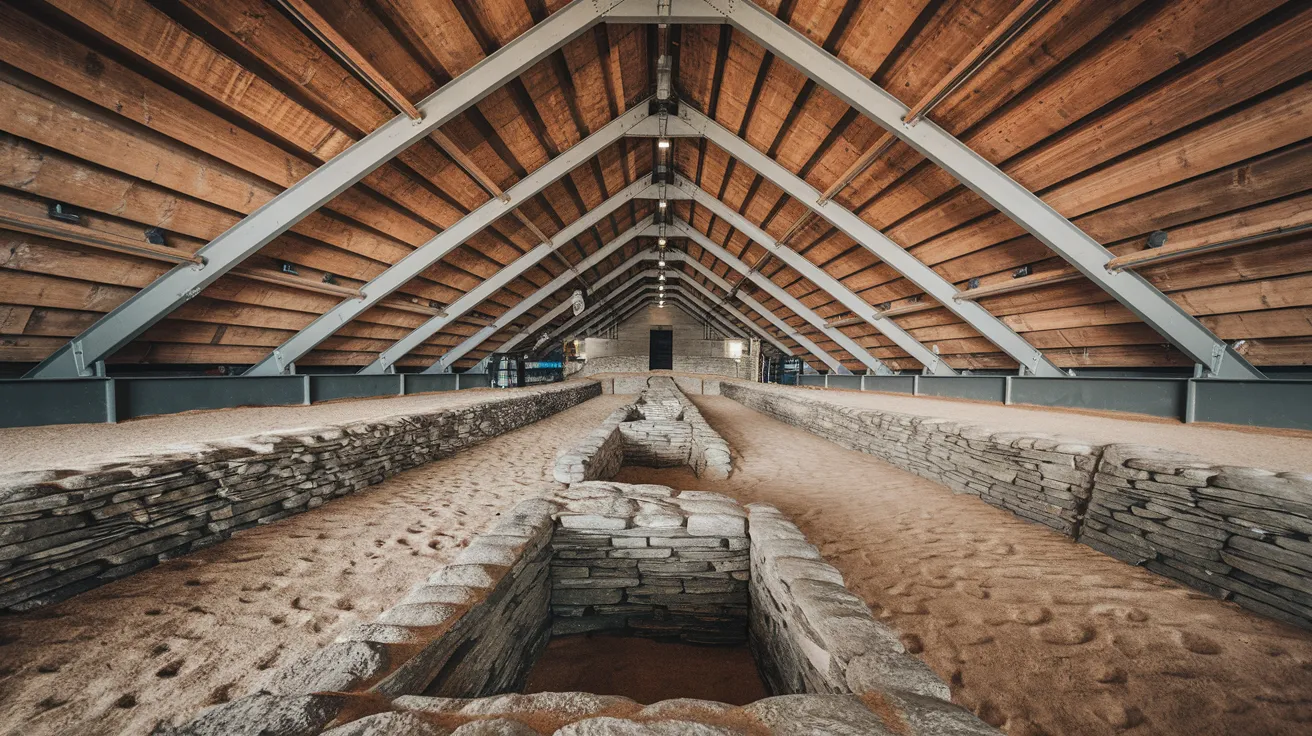
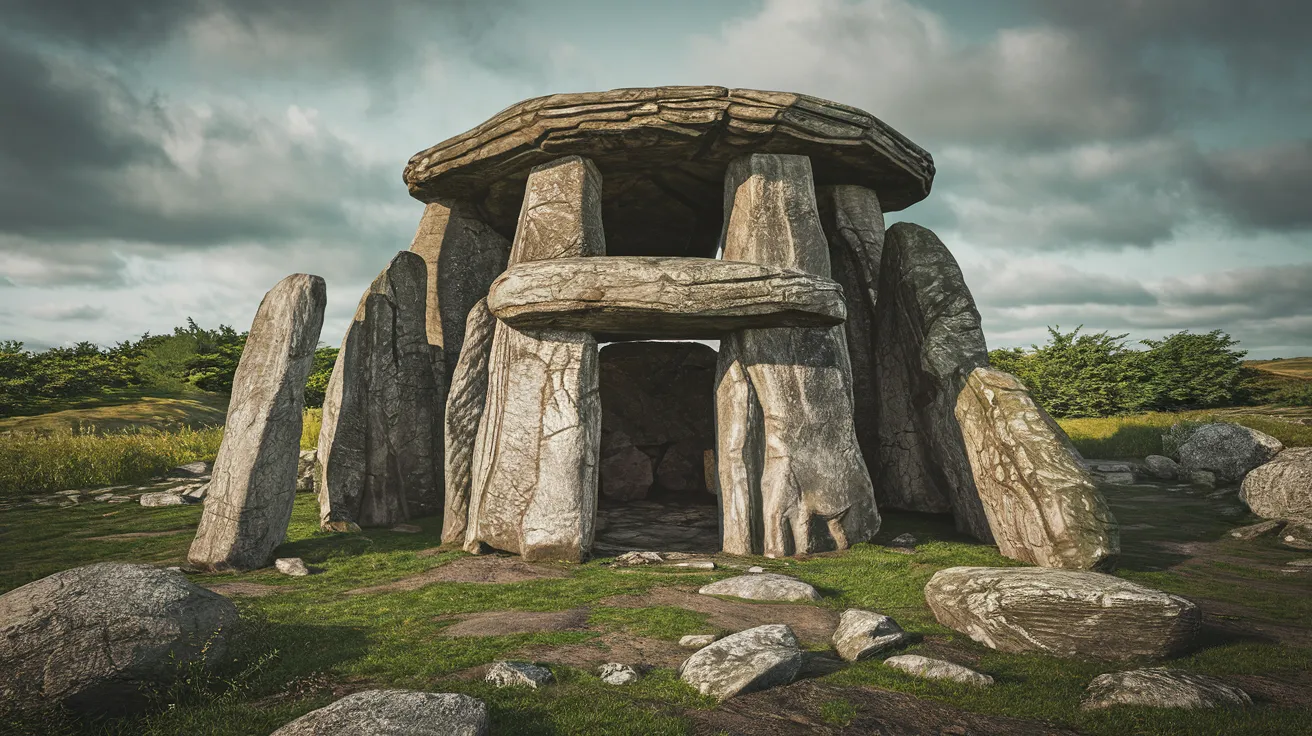
Midhowe Broch: An Iron Age Stronghold
Adjacent to the great cairn stands Midhowe Broch, one of the best-preserved examples of these uniquely Scottish Iron Age defensive towers. Dating from around 200 BC to 200 AD, the broch's massive stone walls still stand several metres high, enclosing a complex interior with cells, stairs, and a central hearth. Excavations revealed evidence of metalworking and even Roman pottery, suggesting trade connections. Its strategic coastal location highlights the importance of defence and maritime control during the Iron Age.
The Westness Walk: A Journey Through Time
One of the best ways to experience Rousay's archaeological richness is the Westness Walk, a waymarked coastal trail starting near Midhowe. This 'mile of millennia' takes you past:
- Midhowe Broch and Cairn: Start by exploring these key sites.
- St Mary's Kirk: The ruins of a 12th-century Norse church, hinting at the transition to Christianity.
- Viking Graves: The walk traverses an area rich in Norse settlement remains and burial sites. Excavations in the 1960s uncovered significant Viking boat burials, including the grave of a high-status woman buried with intricate brooches and the remains of a child, dating to the 9th century.
- Skaill Farmstead: The poignant ruins of a 19th-century farmstead, abandoned during the Highland Clearances, representing a more recent layer of Rousay's history.
The walk offers stunning views across Eynhallow Sound towards the Orkney Mainland and opportunities to spot seals and seabirds along the shore.
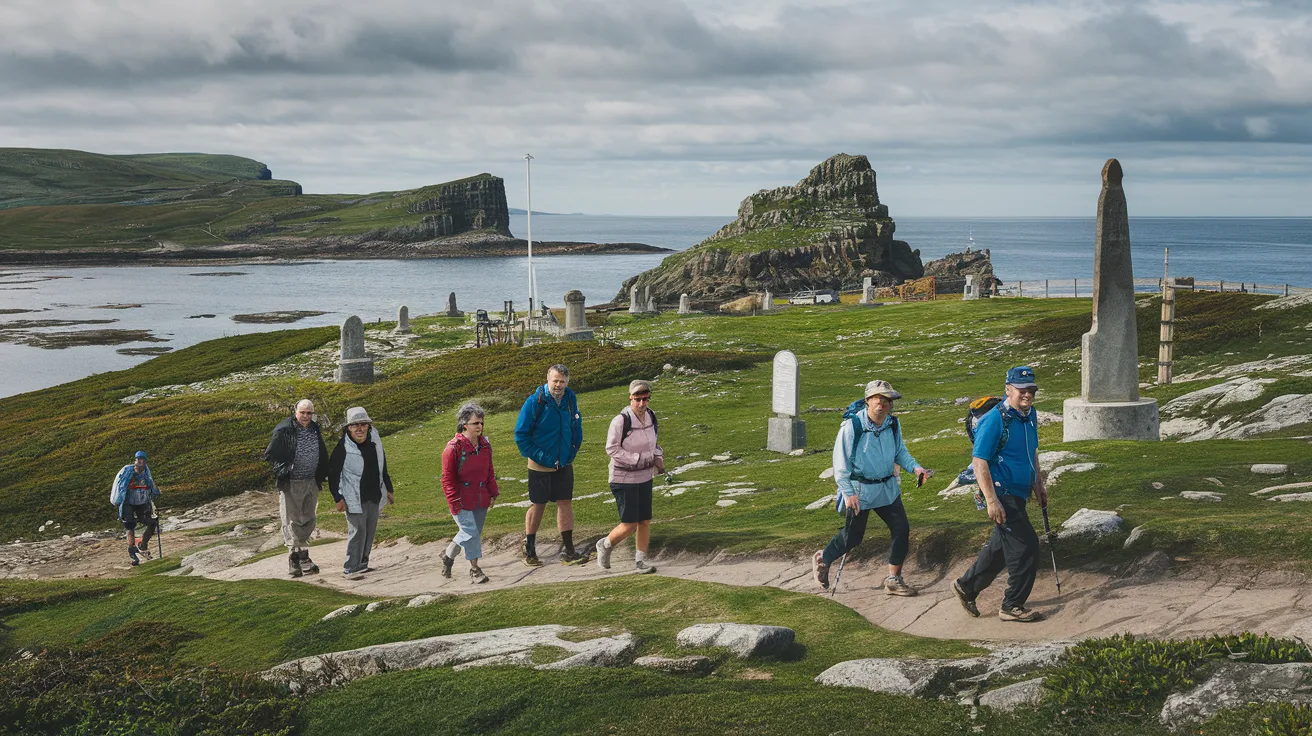
Other Island Highlights
- Trumland House Gardens: While the house itself (a Victorian mansion built by Walter Grant's ancestor) is private, its extensive gardens are often open to the public during the summer months, offering a contrast to the wilder landscape.
- Wildlife Watching: Keep an eye out for harbour and grey seals hauled out on the skerries, particularly along the Scockness coastal path. Birdlife is abundant, including seabirds on the cliffs and wading birds around the shores.
- Knowe of Swandro: An active archaeological dig site on the coast, excavating a multi-period settlement threatened by coastal erosion. Check the Swandro website for visitor information during excavation seasons.
To find relevant videos, search YouTube for "Rousay archaeology Orkney" or "Midhowe Broch".
Planning Your Visit to Rousay
- Getting There: Orkney Ferries operate a regular vehicle and passenger service from Tingwall on the Orkney Mainland to Brinyan on Rousay. The crossing takes about 25 minutes. Booking is essential for vehicles due to limited capacity – call 01856 872044 well in advance.
- Getting Around: Bringing a car or bicycle is recommended to explore the dispersed sites. Alternatively, Rousay Tours offers guided tours covering the main archaeological trail.
- Food & Drink: The Taversoe Hotel near the ferry terminal offers meals (check seasonal opening times) and B&B accommodation. There's also a small shop on the island.
- Accommodation: Besides The Taversoe, several self-catering cottages are available for longer stays. Check Orkney Stays for listings.
- Site Access: Most archaeological sites managed by Historic Environment Scotland are freely accessible year-round during daylight hours. The Midhowe Cairn exhibition centre has specific opening times (usually April-September).
Frequently Asked Questions
How long do you need to visit Rousay?
A full day allows you to see the main Westness Heritage sites. Staying overnight provides a more relaxed pace and time for longer walks or exploring further afield.
Can you walk around Rousay?
Yes, the Westness Walk covers the main archaeological mile. Longer coastal walks are possible, but the island is hilly. Cycling is also popular.
Is Rousay part of the Heart of Neolithic Orkney World Heritage Site?
No, although its sites are of comparable age and significance, Rousay is not included in the designated UNESCO area, which focuses on Mainland Orkney sites like Skara Brae and Ring of Brodgar.
Are the sites difficult to access?
Most major sites like Midhowe and Taversoe Tuick are close to the road with short walks. The Westness Walk involves coastal paths which can be uneven or muddy.
Rousay offers an unparalleled density of history, allowing visitors to walk through 5,000 years in just a few miles. From the awe-inspiring tombs of Neolithic farmers to the remnants of Viking warriors and Iron Age chiefs, the 'Egypt of the North' provides a profound connection to Orkney's deep and layered past. It's an essential destination for anyone fascinated by archaeology and the enduring human story etched into these islands.

